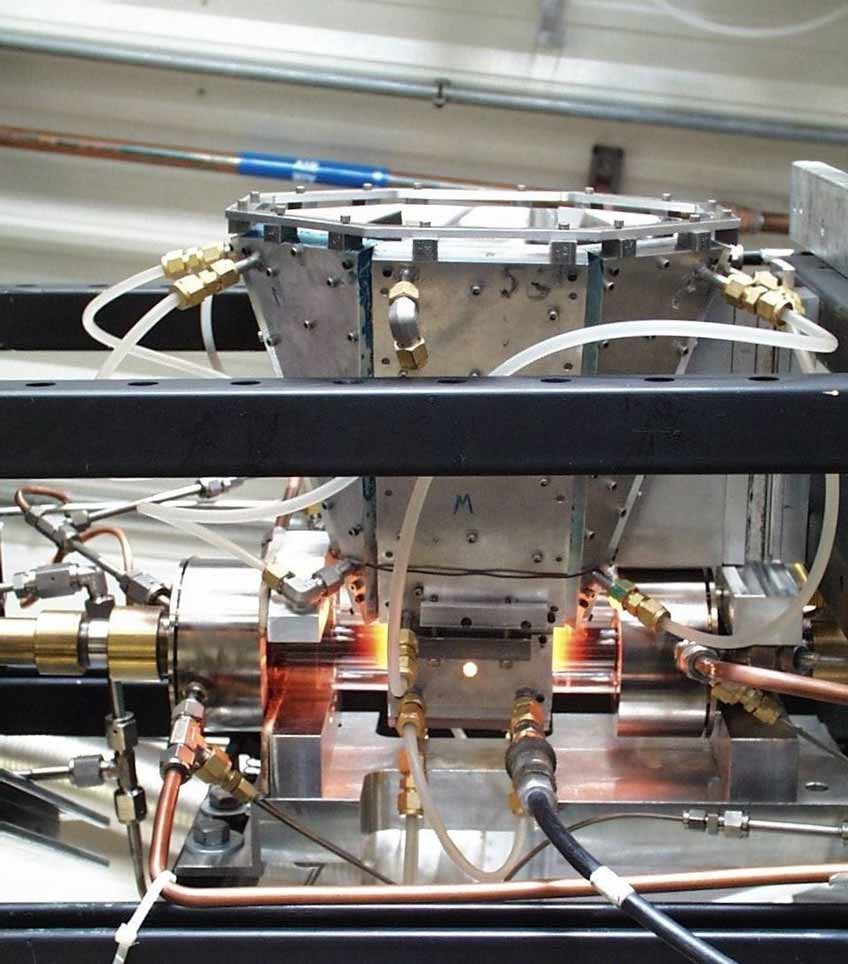Solar Fuels
Solar energy can be used to convert basic chemical feedstocks such as carbon dioxide (CO2) and water into fuels that offer grid stability, energy security, and environmental benefits. NLR researchers are working to make these processes more cost effective and commercially viable.

Experimental testing of a solar thermochemical reactor designed to produce hydrogen gas from water using concentrated sunlight.
Although solar energy technology research has primarily focused on the electricity sector, electricity accounts for only about one-third of total primary energy consumption. Solar energy can also be converted to fuels, which continue to dominate U.S. energy consumption. Solar-to-fuel conversion could play an increasingly important role in creating storable, transportable, high-energy-density fuels. NLR is pursuing several approaches to advance research on using concentrated thermal power to produce fuels.
Solar to Hydrogen
Hydrogen can be obtained from solar energy through solar thermochemical processes or electrolysis with photovoltaic power. NLR solar-to-hydrogen research includes:
- Developing a hybrid solar/electrolysis system employing a solar-driven sulfuric acid decomposer that supports low-temperature electrolysis
- Using concentrating solar thermal power to support high-temperature electrolysis, including incorporating solid-oxide electrolyzer cells to reduce electricity consumption in hydrogen production
- Converting solar heat to facilitate thermochemical hydrogen production
- Using low-temperature photo-electrochemical cells to produce hydrogen.
Solar to Hydrocarbons
Solar hydrogen can be synthesized with CO2 to create hydrocarbon fuel. These renewable carbon fuels are advantageous because they can be compatible with existing infrastructure and engines. Development pathways supporting solar-to-hydrocarbons research include:
- Generating liquid methanol blended with petroleum as a renewable fuel component, using solar hydrogen and CO2 via an established industrial process
- Using solar-receiver reactor designs that incorporate methane steam- or dry-reforming to produce syngas (hydrogen and carbon monoxide), which can then be converted to fuel or chemicals.
Integrated Solar Receivers
Solar-to-hydrogen or solar-to-hydrocarbon processes can be integrated with a high-temperature solar thermochemical receiver reactor for direct solar-energy conversion. NLR is exploring planar-cavity receiver designs that directly integrate these thermochemical processes.
Contact
Share
Last Updated Dec. 6, 2025
